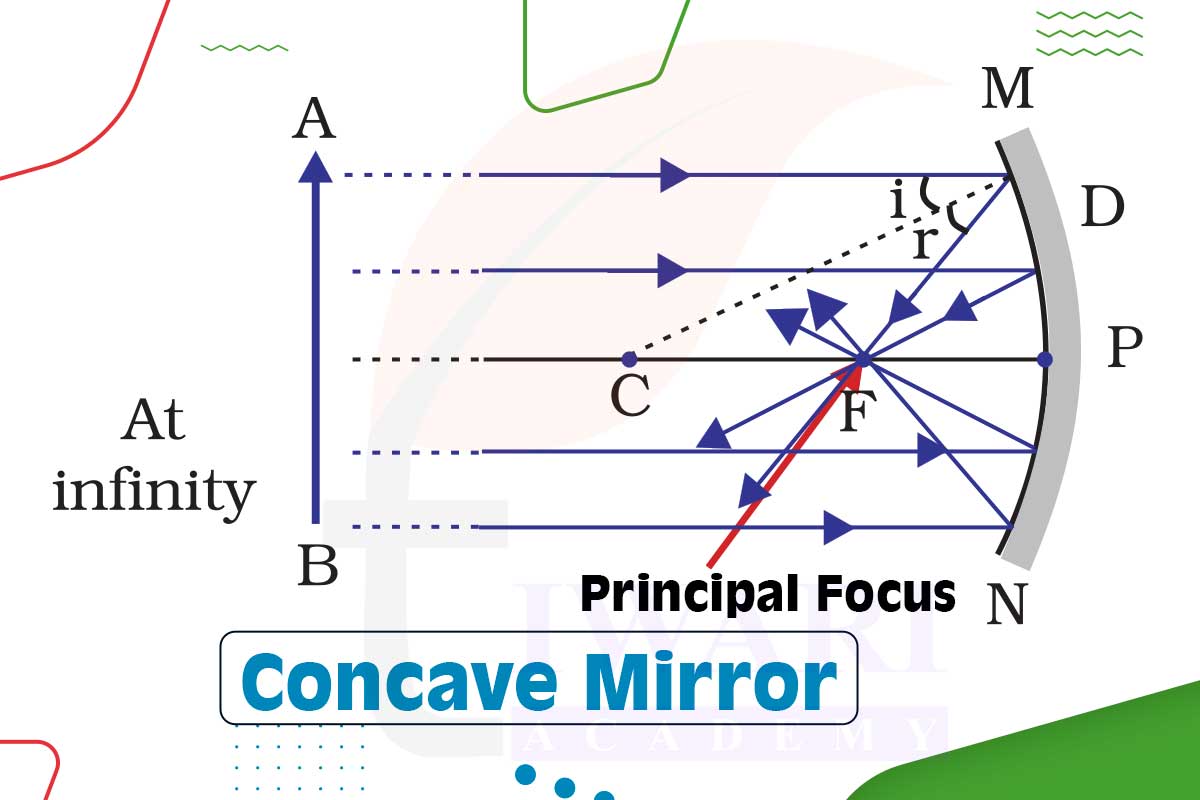The principal focus of a concave mirror is the specific point where light rays parallel to the principal axis converge after being reflected by the mirror. This focal point lies along the principal axis, in front of the mirror. The distance between the mirror’s surface (pole) and the principal focus is known as the focal length, which is a key characteristic in determining the mirror’s image-forming properties.
Let’s discuss in detail
Definition of Principal Focus in Concave Mirrors
Convergence of Parallel Rays: The principal focus of a concave mirror is a unique point where light rays, initially parallel to the principal axis of the mirror, converge after reflection. This phenomenon is a fundamental characteristic of concave mirrors, distinguishing them from other reflective surfaces.
Location of the Principal Focus
Position Relative to the Mirror: The principal focus is located along the principal axis, on the same side as the reflecting surface of the concave mirror. Its exact position depends on the curvature of the mirror.

Focal Length
Distance from the Pole: The focal length is the distance between the mirror’s surface, specifically the pole (the central point on the mirror’s surface), and the principal focus. This distance is a critical parameter in optical calculations and mirror design.
Image Formation
Role in Image Projection: The principal focus is crucial in determining how images are formed by a concave mirror. Objects placed at different distances from the mirror produce images of varying nature (real or virtual) and size, influenced by the position of the principal focus.
Optical Significance
Importance in Optics: The concept of the principal focus is vital in optics, especially in designing optical instruments like telescopes and microscopes, where precise control over light paths is essential for accurate image formation.
Practical Applications
Use in Various Devices: Concave mirrors with well-defined principal focuses are used in various applications, such as in headlights of vehicles, reflecting telescopes, and certain types of cameras, where they help in focusing light effectively to form clear images.
Discuss this question in detail or visit to Class 10 Science Chapter 9 for all questions.
Questions of 10th Science Chapter 9 in Detail


